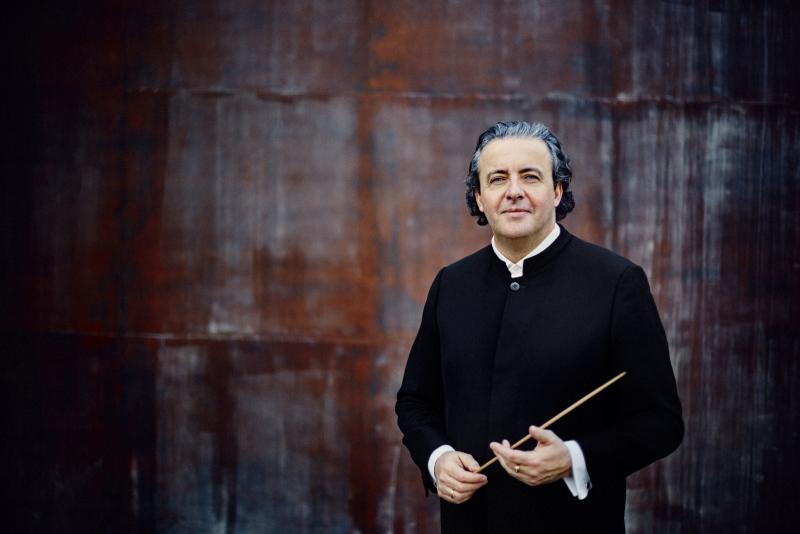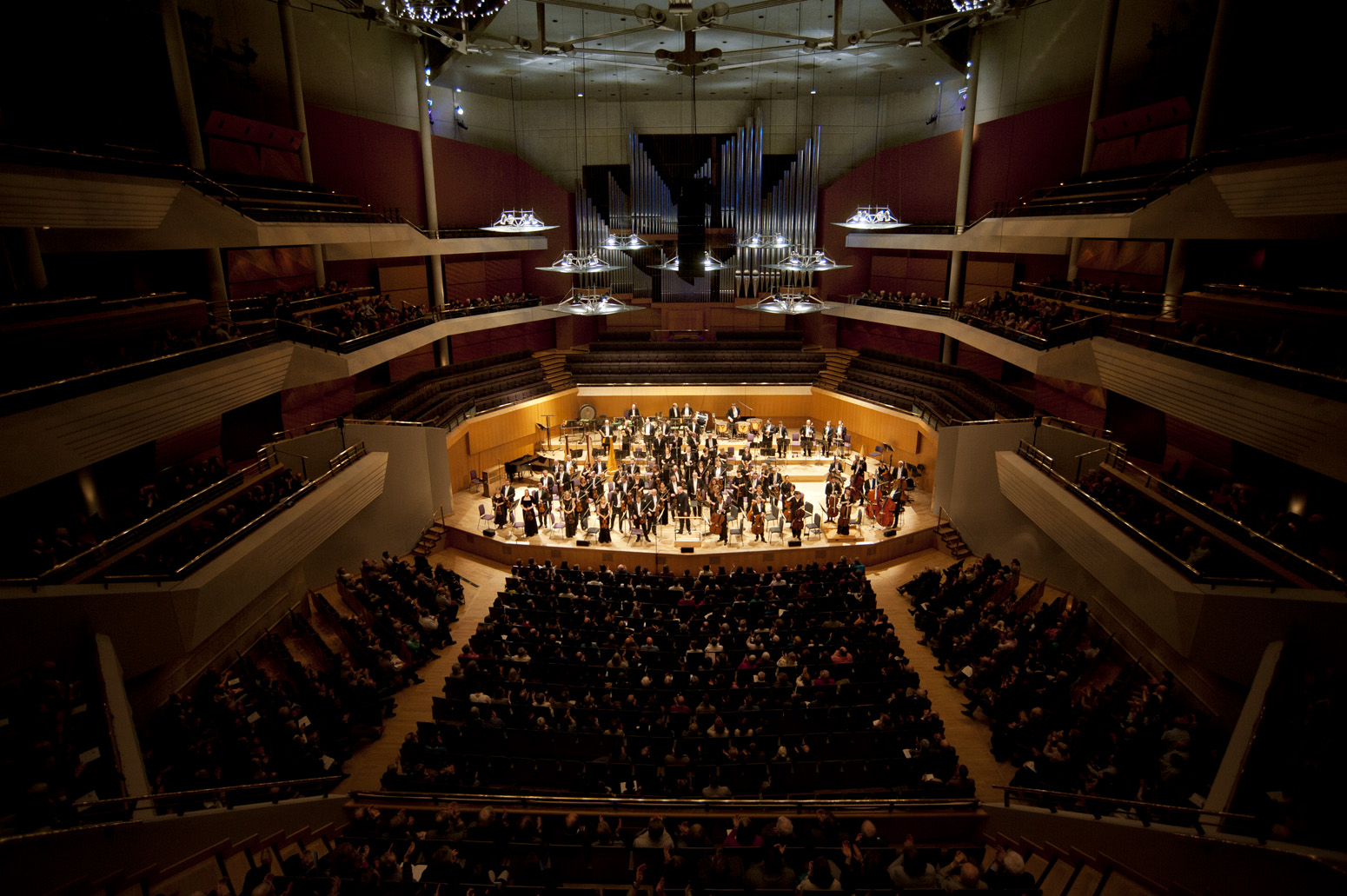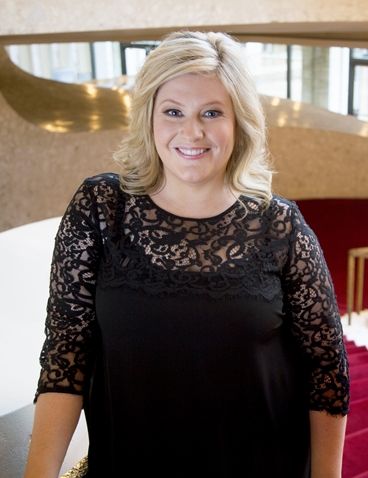BBCPO, Mena, Bridgewater Hall, Manchester review - Mahler's Third lovingly realised | reviews, news & interviews
BBCPO, Mena, Bridgewater Hall, Manchester review - Mahler's Third lovingly realised
BBCPO, Mena, Bridgewater Hall, Manchester review - Mahler's Third lovingly realised
Chief conductor puts a characteristic stamp on opener of his final season

Juanjo Mena memorably began his tenure as chief conductor at the BBC Philharmonic with a Mahler symphony (the Second), and chose to enter his seventh and last season with them at the Bridgewater Hall with the Third. It was a testimonial to an era at the end of which he leaves with the orchestra in at least as good shape as he found them, and in some ways better still.
Is it ever possible to give the six-movement colossus a sense of symphonic shape and forward momentum? I think Sinaisky did as much as anyone could back then, and if the impression was not quite so pronounced this time, it was because individual moments and passing beauties were so lovingly realized. You can’t really have it both ways, and Mena is definitely a man for the beauty of the passing moment – but in the context of ensemble playing that was disciplined and precise. His presentation of the first three movements produced spontaneous applause each time, breaking the spell in one sense but showing how much the audience was enjoying the journey with him. The first movement, beginning with mystery in its introductory bars, showed that Mena and the orchestra have mastered the art of playing the lightest and weightiest textures each with the delicacy, or splendour, the Bridgewater Hall acoustic requires. There were explosive impacts and also dancing springiness in the rhythms, and everything built to a huge, expertly poised climax.
The first movement, beginning with mystery in its introductory bars, showed that Mena and the orchestra have mastered the art of playing the lightest and weightiest textures each with the delicacy, or splendour, the Bridgewater Hall acoustic requires. There were explosive impacts and also dancing springiness in the rhythms, and everything built to a huge, expertly poised climax.
The minuet second movement allowed us to appreciate another aspect of the Mena magic: the delicious charm of a balmy serenade (mixed, as it has to be, with scary outbursts of near-hysteria). The strings, under guest leader Zoe Beyers, were glowing in these textures.
Beyers’ violin solos were among many riveting individual contributions, as were those from principal trombone and trumpet in the third movement (and the woodwind principals elsewhere), but if there was a brief period of uncertainty it came in the matter of balancing off-stage trumpet and on-stage horns here.
 Karen Cargill (pictured right) sang the lines from Nietzsche glowingly in the fourth movement (it was she who uttered them in the Sinaisky performance, too), with the orchestral backcloth firm enough to be more an affirmation than a question, and the women’s voices of the BBC National Chorus of Wales, allied with the boy and girl choristers of Gloucester Cathedral, brought lightness, accuracy and tonal richness to their singing of the words from Arnim and Brentano’s Des Knaben Wunderhorn which give the symphony its “message” (insofar as there is one): heavenly joy knows no end.
Karen Cargill (pictured right) sang the lines from Nietzsche glowingly in the fourth movement (it was she who uttered them in the Sinaisky performance, too), with the orchestral backcloth firm enough to be more an affirmation than a question, and the women’s voices of the BBC National Chorus of Wales, allied with the boy and girl choristers of Gloucester Cathedral, brought lightness, accuracy and tonal richness to their singing of the words from Arnim and Brentano’s Des Knaben Wunderhorn which give the symphony its “message” (insofar as there is one): heavenly joy knows no end.
The last movement brought more glories yet. The Philharmonic cello section, led by Peter Dixon, is known for its nobility and power, and now we heard its sweetness in mezza voce and cantabile – and the entire string forces, making use (as Mena likes them to) of their point-of-bow, played gorgeously. The tiniest pianissimo of the whole performance came in this section, and it grew from that to its mightiest climax – controlled, but spine-tingling in its crescendo – in the final bars.
rating
Explore topics
Share this article
The future of Arts Journalism
You can stop theartsdesk.com closing!
We urgently need financing to survive. Our fundraising drive has thus far raised £49,000 but we need to reach £100,000 or we will be forced to close. Please contribute here: https://gofund.me/c3f6033d
And if you can forward this information to anyone who might assist, we’d be grateful.

Subscribe to theartsdesk.com
Thank you for continuing to read our work on theartsdesk.com. For unlimited access to every article in its entirety, including our archive of more than 15,000 pieces, we're asking for £5 per month or £40 per year. We feel it's a very good deal, and hope you do too.
To take a subscription now simply click here.
And if you're looking for that extra gift for a friend or family member, why not treat them to a theartsdesk.com gift subscription?
more Classical music
 Hallé John Adams festival, Bridgewater Hall / RNCM, Manchester review - standing ovations for today's music
From 1980 to 2025 with the West Coast’s pied piper and his eager following
Hallé John Adams festival, Bridgewater Hall / RNCM, Manchester review - standing ovations for today's music
From 1980 to 2025 with the West Coast’s pied piper and his eager following
 Kaploukhii, Greenwich Chamber Orchestra, Cutts, St James's Piccadilly review - promising young pianist
A robust and assertive Beethoven concerto suggests a player to follow
Kaploukhii, Greenwich Chamber Orchestra, Cutts, St James's Piccadilly review - promising young pianist
A robust and assertive Beethoven concerto suggests a player to follow
 Robin Holloway: Music's Odyssey review - lessons in composition
Broad and idiosyncratic survey of classical music is insightful but slightly indigestible
Robin Holloway: Music's Odyssey review - lessons in composition
Broad and idiosyncratic survey of classical music is insightful but slightly indigestible
 Classical CDs: Wolf-pelts, clowns and social realism
British ballet scores, 19th century cello works and contemporary piano etudes
Classical CDs: Wolf-pelts, clowns and social realism
British ballet scores, 19th century cello works and contemporary piano etudes
 Bizet in 150th anniversary year: rich and rare French offerings from Palazzetto Bru Zane
Specialists in French romantic music unveil a treasure trove both live and on disc
Bizet in 150th anniversary year: rich and rare French offerings from Palazzetto Bru Zane
Specialists in French romantic music unveil a treasure trove both live and on disc
 Scottish Chamber Orchestra, Ibragimova, Queen’s Hall, Edinburgh review - rarities, novelties and drumrolls
A pity the SCO didn't pick a better showcase for a shining guest artist
Scottish Chamber Orchestra, Ibragimova, Queen’s Hall, Edinburgh review - rarities, novelties and drumrolls
A pity the SCO didn't pick a better showcase for a shining guest artist
 Kilsby, Parkes, Sinfonia of London, Wilson, Barbican review - string things zing and sing in expert hands
British masterpieces for strings plus other-worldly tenor and horn - and a muscular rarity
Kilsby, Parkes, Sinfonia of London, Wilson, Barbican review - string things zing and sing in expert hands
British masterpieces for strings plus other-worldly tenor and horn - and a muscular rarity
 From Historical to Hip-Hop, Classically Black Music Festival, Kings Place review - a cluster of impressive stars for the future
From quasi-Mozartian elegance to the gritty humour of a kitchen inspection
From Historical to Hip-Hop, Classically Black Music Festival, Kings Place review - a cluster of impressive stars for the future
From quasi-Mozartian elegance to the gritty humour of a kitchen inspection
 Shibe, LSO, Adès, Barbican review - gaudy and glorious new music alongside serene Sibelius
Adès’s passion makes persuasive case for the music he loves, both new and old
Shibe, LSO, Adès, Barbican review - gaudy and glorious new music alongside serene Sibelius
Adès’s passion makes persuasive case for the music he loves, both new and old
 Anja Mittermüller, Richard Fu, Wigmore Hall review - a glorious hall debut
The Austrian mezzo shines - at the age of 22
Anja Mittermüller, Richard Fu, Wigmore Hall review - a glorious hall debut
The Austrian mezzo shines - at the age of 22
 First Person: clarinettist Oliver Pashley on the new horizons of The Hermes Experiment's latest album
Compositions by members of this unusual quartet feature for the first time
First Person: clarinettist Oliver Pashley on the new horizons of The Hermes Experiment's latest album
Compositions by members of this unusual quartet feature for the first time

Add comment